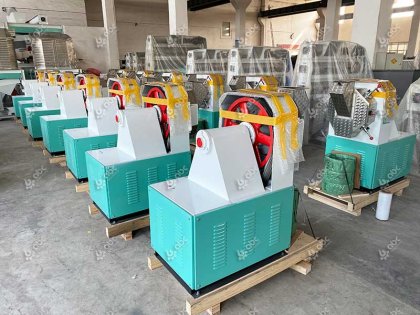Like everyone else, you have most likely sought to reuse and make the most of what would have otherwise gone to waste. This push to recycle is a basic human drive necessitated by the need increase efficiency while reducing costs at the same time. Whenever something cannot be reused, you have almost always found a suitable alternative.
As you have probably observed, this desire to reuse or find alternatives is higher in the energy sector than in any other. High energy prices triggered by a growing world population are to blame. To relieve this pressure on the available energy and financial reserves, suitable yet cheaper alternatives or ways or reusing what is currently available must be found. The biomass briquette is a good example of both.
Biomass Briquettes
These are fuel substitues made through the compaction of bio-degradable waste such as saw dust or seed husks. You will be surprised to learn that they have been around for millenia. First invented in Nepal, they have over the years remained a clean and cost effective form of alternative energy. They still are today and by the look of things, will be so in the future. However, unlike the primitive hand made briquettes of the past, modern ones are made in in special briquette making units.

Materials Used For Biomass Briuquette Making
You have two main sources of biomass for briquette making. The first is the agricultural sector. A vast amount of biomass produced in our farms sadly goes to waste. The seed husks and plant stalks you throw away can help bridge the deficit in energy supply if properly utilized. The second is the timber industry. By-products of saw mill, paper mill and logging operations such as sawdust are left to go to waste. But no longer, to tap into this wasted potential, wood sawdust briquette making units are sprouting the world over. It is this type of unit that we will discuss below.Wood Sawdust Briquette Making Unit
If you walk into a biomass briquette making plant, you will find a series of machines designed to work together towards a common goal. Each machine can be operated independently if the need arises. Below is an outline of each stage in the briquette making process plus what each machine in the stage does.Processes in a Wood Sawdust Briquette Making Plant
CrushingYour raw material is first crushed into the required size using a crusher known as a hammer mill. Once the particles are smaller than the recommended 3 millimetres, you are now ready for the next stage.
Drying
The crushed particles are conveyed to a dryer by a conveyor belt. In this stage, you remove excess moisture because despite drying your material in the sun, the moisture levels are still above the recommended 15 percent.
Conveying
Once the first two stages are done, you then convey your particles to the compaction machine via a conveyor belt.
Compaction
You have a choice of two compactors depending on the intended final product. There is the screw type compactor for making hollow briquettes and the punching press for solid ones.
Firing
After compaction, you can opt to fire the briquettes into charcoal. To do this, you place them in a sealed kiln and ignite them. 2 to 3 days later and after reaching temperatures of up to 700 degrees celcius, your product is ready for the last stage.
Packaging
Here, you package your finished product using a packaging machine. Your briquettes are now ready for the market or store.
Benefits of Briquette Making
Since communities living in remote areas heavily depend on wood and charcoal for their fuel needs, they inevitably deplete the forests around them. Providing them with affordable eco-friendly alternatives such as briquettes not only meet their needs, it also saves the environment. Moreover, the money that would have otherwise been spent on fuel can now be used for personal development. Finally, briquette making plants provide locals with employment opportunities.Conclusion
With today's world of high energy prices, affordable alternative forms of energy are needed maybe more than ever. Wood sawdust briquette making units can do alot to ease the burden on the world's energy reserves. Since the technology and know how exist, all that now remains is the will to utilize what could possibly change the world for many impoverished people.
















